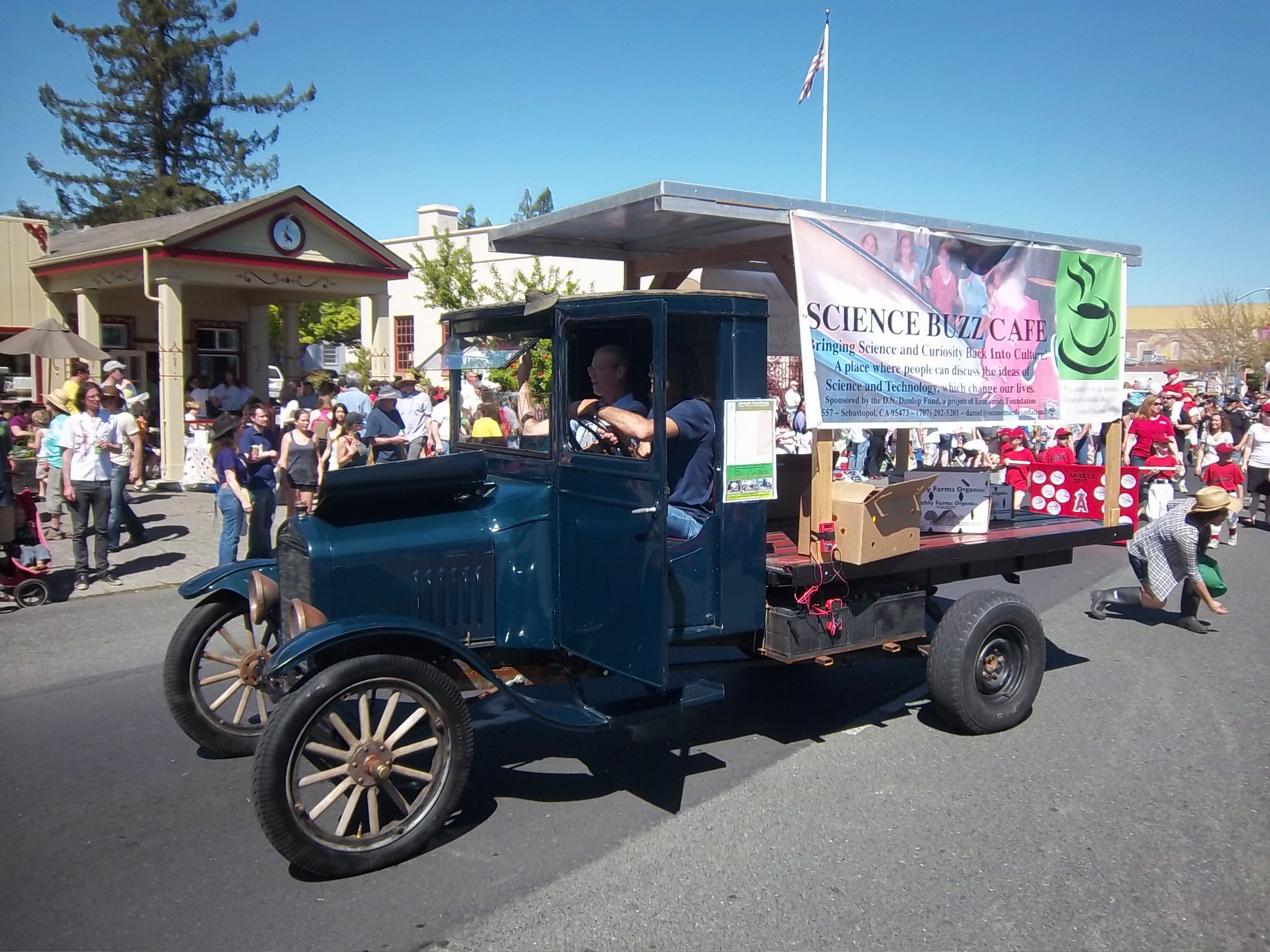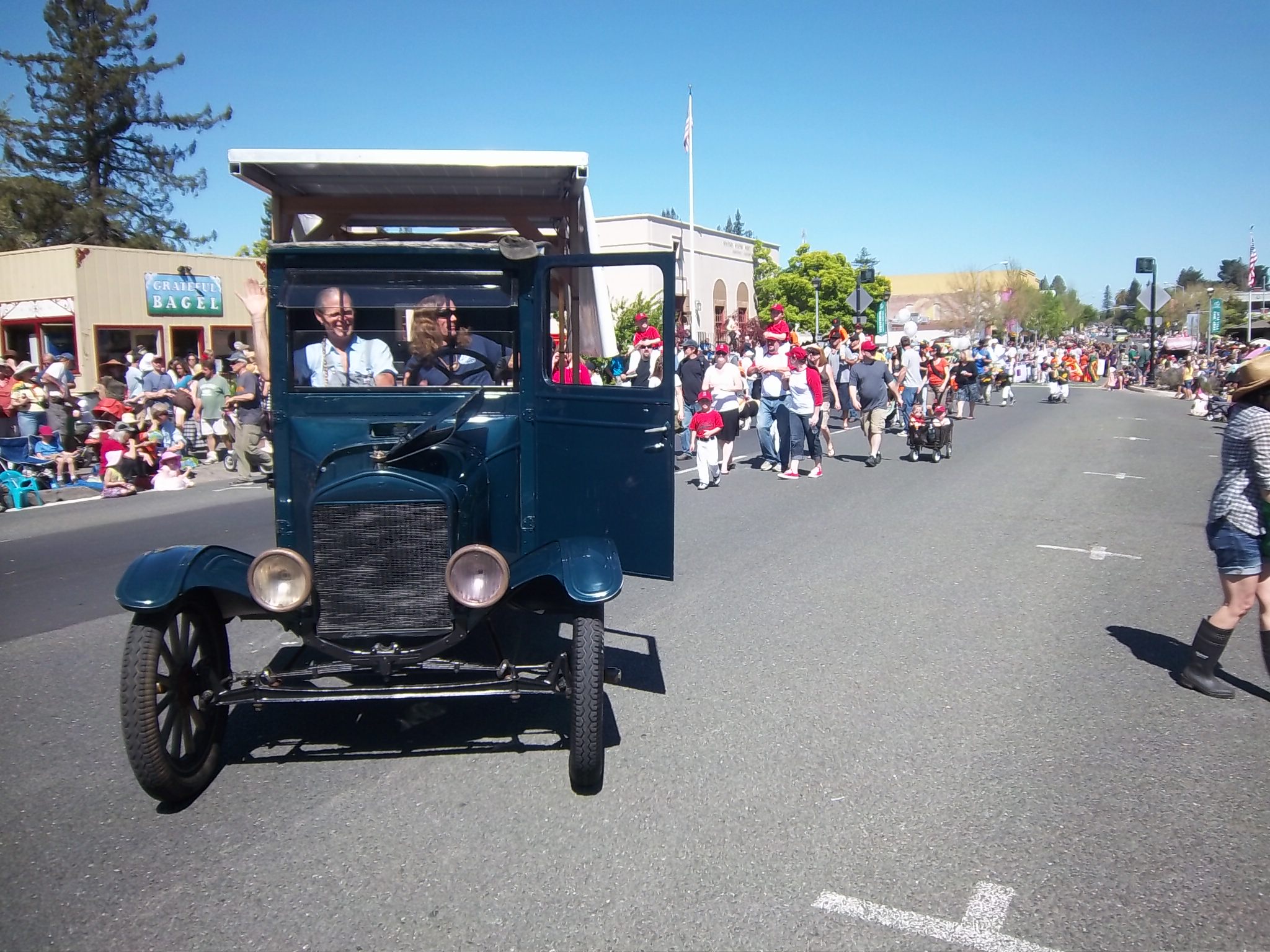Introduction
The Science Buzz Cafe is dedicated to the night science tradition. It is for professional scientists who do it for money and for the amateurs who do it for love.
Professionals have science for their spouses. The amateurs have it for their lovers. The Science Buzz Cafe honors both species.

A Solor powered 1925 Ford
Nearly 2 years in the making with the dedication of a small team and large community, this 1927 Ford made its debut in the Apple Blossom Parade in Sebastopol, California on April 21st, 2012.

With the support of the French Garden Farm (Dan Smith) and Thunderstruck Motors (Brian Hall) of Sebastopol, California volunteers from the Science Buzz Cafe have modified a 1925 Ford Ton truck to operate as a solar electric vehicle. A 9″ DC electric motor has replaced the gasoline engine. It uses 10 deep cycle lead acid batteries that are charged by four 24-volt solar panels that are installed 5 feet above the flatbed.
History
It is not widely enough appreciated that the greatest science invention was the printing press. It was a great science invention because it was wide communication that enabled scientists, aka natural philosophers, that brought about science as we know it now. Everyone knew someone who had an uncle who heard it on good authority that there were entrepreneurs who could turn lead into gold. This story had all the charms of modern “chem trails” stories with the additional benefit of the appeal of GOLD. But science began to rise up out of the dross of literature and philosophy when people could try it for themselves: Printing made communication cheap enough that the recipes of science could be attempted. This was real innovation and science rushed onto the human race like a rash.
But it is also not appreciated that coffee made an important contribution to science. Until coffee was widely available in Europe the idea of actual reasoning was not a popular one because people were reluctant to drink the water in Europe, it being an invitation to death because of the wee beasties, the animacules, germs, if you will, that found Europe so charming this time of year. Or any other. Consequently they drank beer, wine, mead, ale, brandy, whiskey and so on. The array of beraves was as much fun as our fashionable bottled water today. Except it make Europeans drunk as skunks, which gave great joie de vivre to the elan vital. And relieved them from the burden – and ability- for serious thought.
Then along came coffee, made with water so hot it killed the unknown but troublesome bugs that brought everything from cholera to ordinary tourista to the people. Alcohol consumption decreased, brain power increased, and soon coffee houses were found anywhere worth visiting. Each coffehouse specialized in a particular kind of thought, be it philosophy, science, politics, what have you. For very little money, the price of a cup of java, one could listen to experts holding forth on the hot topic of the day. These cafes became known as “penny universaties” for this reason. These doings were so popular it became common for someone to feverishly take notes, print them up, sell them, and Lo, newspapers were born. This tradition was developed until scientific journals became the mainstay of scientific publication as a means of promulgating the word right up until now when the internet has begun to replace much printing.
But communication is still the soul of science. Someone has distinguished between “daytime science” and “nighttime science”. The first is the “legitimate” science, the one of conferences and publications, the one argued out in the light of day with your colleagues ready, nay, anxious, to find your work at fault. But night science is the science of bull-sessions and dreams and the disruption of sleep when an idea needs to be attended Right Now. It is the science of coffee houses. It is the fun one.
The Science Buzz Cafe is dedicated to the night science tradition. It is for profesional scientists (who do it for money) and for the amateurs, who do it for love. Professionals have science for their spouses. The amateurs have it for their lovers. The Science Buzz Cafe honors both.
